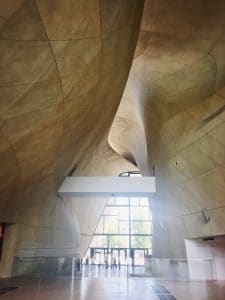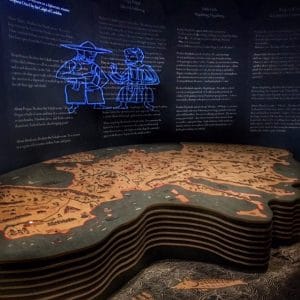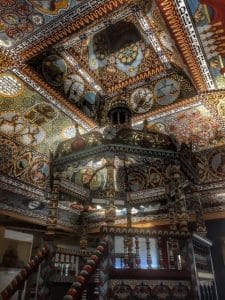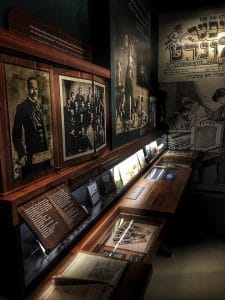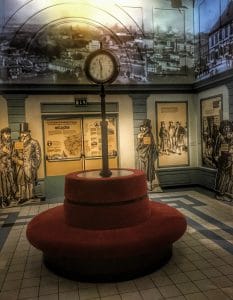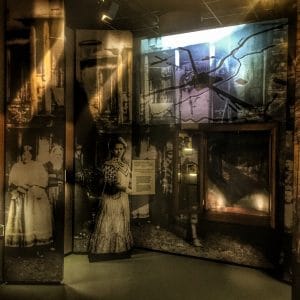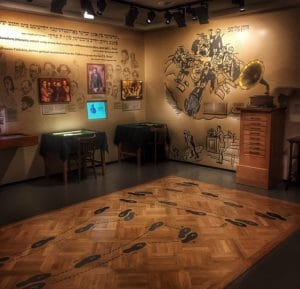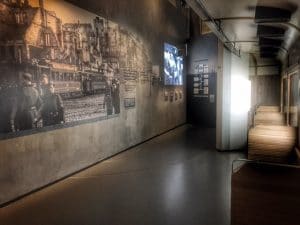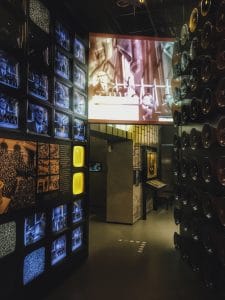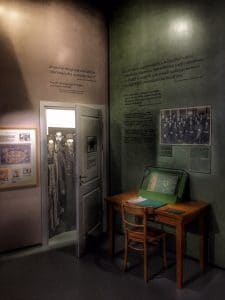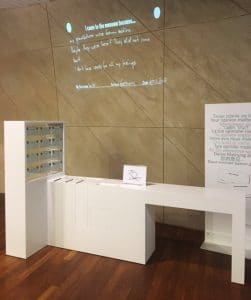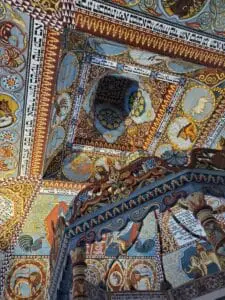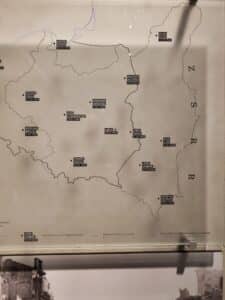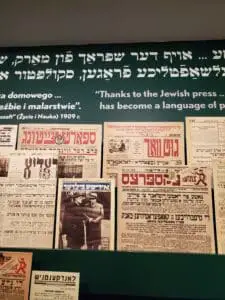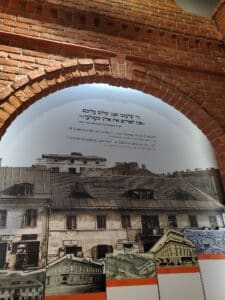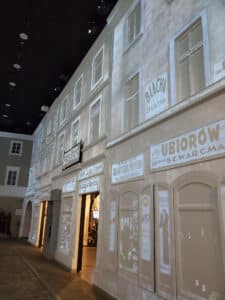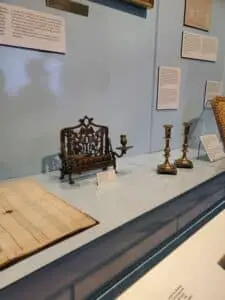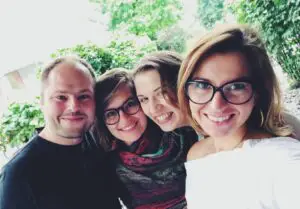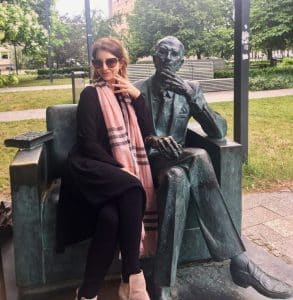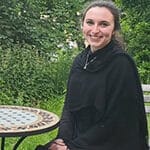The POLIN Museum of the History of Polish Jews, located in Warsaw, Poland, is a renowned cultural institution dedicated to preserving and presenting the 1,000-year history of Jewish presence in Poland and to promote tolerance, understanding, and mutual respect. It serves as a space for learning, reflection, and dialogue, exploring the rich cultural and religious heritage of Polish Jews and their role in Polish history.
The museum was founded in 2005 by the Association of the Jewish Historical Institute of Poland and the City of Warsaw. Its current building was opened to the public on April 19, 2013. It is situated in the heart of Warsaw, on the site the once thriving Jewish district, which was later turned into Warsaw Ghetto, the largest Jewish ghetto established by the Nazis during World War II. The building is adjacent to the Monument to the Ghetto Heroes, one of many sites in Warsaw that commemorate the Jewish resistance fighters of the Warsaw Ghetto Uprising and rests at the start of a series of monuments known as The Memorial Route of Jewish Martyrdom and Struggle.
Designed by Finnish architects Rainer Mahlamäki and Ilmari Lahdelma, the building is an architectural masterpiece, featuring a contemporary glass facade contrasted with a large, undulating, and copper-colored structure. This design symbolizes the splitting and merging of Jewish history and culture in Poland. The structure incorporates various exhibition spaces, educational facilities, a resource center, a cinema, a restaurant, and a gift shop.
The POLIN Museum has received numerous accolades for its innovative approach to museum storytelling, architectural design, and educational initiatives. It was awarded the European Museum of the Year Award in 2016 and has consistently been praised for its impactful contributions to Holocaust education and Jewish heritage preservation.
Each semester, students attending SRAS programs in Poland take a tour of this incredible museum as part of their cultural package abroad. Below, a few of them report on their experiences exploring that institution and what they learned from it.
POLIN: Cutting Edge History in Poland
By Sarah Kirksey
A perfect weekend for me almost always includes a visit to an art gallery, history museum, or a traveling exhibit of some sort. However, trying to drag my family and most friends to museums is next to impossible. Encouraging young adults, adolescents, and elementary children to visit museums and galleries is exhausting, and more than often, I feel defeated.
Having worked in museums, helping with education, travel, conference, and communication, I have personally witnessed the changes museums have undertaken to become an attraction for all. Museums today are now discovering new and exciting ways to attract not just the academic historian or grandfather-history-buff. Museums are now a place for everyone to come and learn in an innovative and fun way while remaining educational and factual.
POLIN Museum, a museum about the “Thousand-Year History of the Polish Jews,” is the perfect example of changing the way we view museums. The architecture, historical placement, the eight core exhibitions, and the services available have made POLIN one of the most visited museums of Europe since it opened in 2013. And with its impressive display of history, it is no wonder that it was awarded the European Museum of the Year for 2016!
“Polin” is Hebrew for “rest here.” The name of the museum was chosen in reference to the legend of the arrival of the first Jews in Poland, where they were told they could finally rest from a life of near perpetual exile. On the glass panels that cover the building, “Polin” is written in Hebrew and Latin letters.
The central hall is breathtaking. The empty space symbolizes the cracks in the history of the Polish Jews as well as references Moses leading the Jews from Egypt and crossing the Red Sea, as written in Exodus. The bridge connecting the two halves of the building symbolizes the connection of the past to the present. The amount of sunlight that shines throughout the main hall is a reminder that history is never-ending and that the POLIN Museum is a museum of life.
The Core Exhibition is made up of eight galleries that expand from the legend of the arrival of Jews into Poland through the Middle Ages into the 19th century, the social, political, and religious diversity of Polish Jews, pre-WWII, the Holocaust, post-war, and into contemporary times. The Core Exhibition is a narrative, telling the 1000-year history through artifacts, interactive installations, videos, life-size figures, sounds, words, models, and more. From the beginning of the exhibit until the very last room, POLIN offers an educational but exciting presentation of history.
POLIN’s First Encounters gallery introduces visitors to fascinating explorers and adventurers such as Ibrahim Ibn Yakub, a Jewish diplomat who recorded his travels throughout Europe in his now well-known memoir. Meet Yakub, King Kazimierz the Great, and others as you find out why Poland became known as “Paradisus Iudaeorum,” a Jewish paradise.
The Into the Country gallery takes you into the wars that raged through Poland during the seventeenth century. Listen to battles being fought, swords clashing, and the spreading of wildfire as you learn of the attacks on Polish Jews. The main focus of this gallery, however, is to present the daily life of Jews by bringing you into an exhibit designed to resemble the Jewish Marketplace and Synagogue. A church with videos, inscriptions, and pews also tell the story of Jewish-Christian relations during this time.
Visiting POLIN is never a stale experience. As you go from gallery to gallery, you find yourself standing next to life-sized figures of Jews in the dress of that gallery’s time period. Scenes change on the walls as you walk through the past. Videos, recordings, and sounds have you stopping to listen and interact. Sit at the desk of a Yiddish poet, wait for the “train” at the station, become educated in the classroom where rabbis taught. Open cabinets, pull out drawers, touch things! POLIN Museum’s narrative history is brought to life for each visitor.
During the interwar period, life for Polish Jews began to change. Although still strong in their Jewish nationalism, the younger, educated Jews became more assimilated into Polish culture. It was this time that was often referred to as the second “Golden Age.” However, as European relations began to shift and anti-Semitism began to rise, Polish Jews found themselves on the brink of terror. Step back into time and take a walk through the On the Jewish Street, 1918 – 1939 gallery, and discover what life was like before WWII.
The Holocaust, 1939 – 1945 gallery is unlike any other museum’s Holocaust exhibit. See how the now German-occupied country changed the lives of millions of Polish Jews. Read how the Nazis humiliated Jews. Hear bombs as they are being dropped. Look at the list of hundreds of ghettos established throughout Poland. Live in the Warsaw Ghetto. Witness the heroic acts of the Polish Underground Army and their attempt to overthrow Nazi reign through the Warsaw Uprising. Read the last written words of Jewish children. Touch the map of the various concentration and extermination camps, and see where what ghetto fed into what camp. Learn the names of those who survived and remember those who perished. Step into the slightly shaky exhibit that resembles the cattle cars that took Jews from the ghettos to places like Treblinka and Auschwitz-Birkenau. Be transported from the comfort of the present into the dangers of the past.
Once the war ended and concentration camps had been liberated, only about 300,000 Polish Jews (out of more than 3 million) survived. Following the war, times were just as uncertain as Polish Jews returned to the ruined and destroyed cities of Poland. During the Stalin-era and Soviet occupation, the cities were rebuilt, but Poland was still not free. Explore the last and final gallery, Postwar Years, 1944 to Present, to see how Poland reclaimed its freedom and has developed into what it is today. Following the exhibit, reflect on what you have seen and learned throughout the Core Exhibitions, and think, ask, and discuss how the identity and memory of Polish Jews are relevant today.
But POLIN Museum offers more than just galleries. Temporary and traveling exhibits come and go at the museum. The Education Center offers educational programs and classes for students, small groups, and the general public. Walking tours of the former Warsaw Ghetto with a museum guide are available. The Resource Center’s staff members offer assistance in genealogical, historical, and local research. Workshops, panels, and lectures are offered throughout the year. A specialized library is located at the museum, and is dedicated to preserving and sharing the history of Polish Jews. The gift shop is open for visitors to purchase a book on a subject matter from the exhibits; expand your mind and learn more on your own! And if you find yourself hungry or needing a coffee, the Besamim Restaurant in the main hall offers a variety of Jewish dishes, Kosher ready-to-eat meals, international cuisine as well as local Polish favorites. Even while eating, you can keep learning and experiencing!
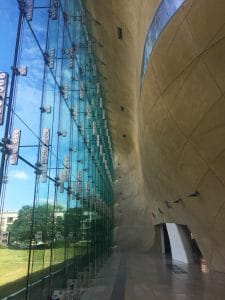
There will always be a need for museums that hold hundreds upon hundreds of artifacts, displaying them behind ropes or in glass exhibits. Those museums are historic, important, and established with their galleries full of artifacts from the past. Because of their highly acclaimed status, such museums will always be relevant as well as visited.
However, the way we are studying history is changing. And museums are changing with it. As the world becomes more technically advanced, more reliant on social media, more dependent on the “wow factor,” museums are changing too, to teach us in more innovative, interactive, and imaginative ways.
POLIN Museum does an excellent job of presenting its material in a way that can captivate nearly anyone – despite their education status, political affiliation, religious views, or economic background. Gone are the days where field trips to the museum are dreaded by the students and chaperones alike.
History is cool, and so are museums.
Visiting POLIN as a Jewish-American Student (2023)
By Nya Feinstein
When I visited the POLIN museum in Warsaw, I was struck by how effectively the depth of the Jewish culture, its treasured traditions, and the long-standing history of Judaism and the Jewish people were all presented through engaging and informative multimedia exhibits. I attended the museum with my peers as part of SRAS’ Security and Society in the Information Age program. As we perused the POLIN museum, a colorful tapestry of Jewish life was woven by the exhibits’ threads of history, art, literature, film, magazines, music, and language.
Before moving to America, my Jewish ancestors lived in Central and Eastern Europe. Most of the family history I have heard is from the past century. It is charged with the tragedy of fleeing increasingly violent antisemitism in Belarus on one side of the family or the devastation of Poland in the aftermath of WWII on the other. It is very true that we as a Jewish nation have experienced indescribable sorrow and loss throughout our history, but the accounts of the periods of security and joy are, unfortunately, more rarely discussed.
POLIN covers the full history. In the past, Poland was a hub of Jewish life in which culture, religion, and the economy flourished for Jews. In fact, the first records of Jewish presence on the territory of modern-day Poland date as far back as the 10th century, though permanent settlements did not appear until a few centuries later.
The Jewish population rapidly expanded and flourished with King Casmir III in the 14th century. His General Charter of Jewish Liberties was written and enacted at a time when Jews were often being expelled from other European countries. Many of those Jews came to settle in welcoming Poland. Casmir ensured that they could live in peace and prosper, knowing that if they did, Poland itself would prosper. And indeed, both did under his rule and long after. From around this time, the museum displays a coin with Hebrew inscriptions — the museum’s oldest artifact.
As the first centuries of Jewish existence in Poland passed, peace prevailed. One of the most memorable exhibits from this era at the museum is the collection of remarks from individuals — both within and outside the Jewish community — who lived during this time. The Jewish voices among them expressed gratitude and optimism, overjoyed to be removed from the blatantly hostile environments they had faced. Jewish life in Poland blossomed, especially economically and intellectually.
Alongside artifacts and original quotations, the POLIN museum gives visitors the privilege of stepping into the past via reconstructions. While there were many examples throughout the tour, one of the most striking was a reconstruction of a synagogue built during the 1600s in Gwoździec, a small village in southern Poland. Though it was destroyed in World War II, its memory lives on in the form of an extremely accurate and beautiful reconstruction on display for all to admire.
Walking through the museum, we walked through time. Within a few steps, centuries passed and we entered the modern era. The time of peace was faltering before our very eyes, but — despite persistent obstacles — culture flourished. The POLIN museum teaches all visitors about not only the survival of the Jewish nation, but also the details of life that brought light into the darkest days. One of the most heartwarming moments of our tour was seeing my enthusiastic roommate try her hand — or rather feet — at a Jewish dance, the directions for which were displayed on the floor and accompanied by traditional music. Such creative outlets are expressions of pure life. Life — or חי in Hebrew (pronounced “chai”) — is a precious value and blessing.
There are certain elements of Jewish life and history that I often worry are in danger of fading into the footnotes of history books. One of these is the Yiddish language. Once spoken widely in Ashkenazi Jewish homes and communities, it’s becoming more and more rare to find in use. Language provides a unique map of the past and present of a society — with every lost language, more dies than obscure grammar rules, but a method of connection and communication on the most personal level and a mosaic of historic and cultural elements. The POLIN museum fights this danger, displaying Yiddish newspapers and even a Yiddish film.
Ashkenazi is the predominant form of Judaism that flourished in Central and Eastern Europe – the name actually means “German” in Hebrew – and the former population distribution of these Jews roughly corresponds to areas that Germans migrated to over their long history.
Moving on to the somber exhibit concerning World War II elicited strong emotions from all present. The photographs, documents, and accounts shown in this section of the museum truly remind us that it’s crucial that we and future generations never forget the atrocities committed or the people whose lives were stolen. Abel Herzberg, a Holocaust survivor, once stated: “There were not six million Jews murdered; there was one murder, six million times.” Every murder was a tragedy, and POLIN takes strides to make sure that each victim is mourned.
Emerging from the museum, I took a few moments to reflect on my experience. I experienced the entire spectrum of emotions, from the bewilderment of learning about Jewish history previously unknown to me, to the warmth and comfort of relating to cultural aspects, to the nearly physical ache of reading about the horrors of World War II. I can say without a doubt that POLIN is not only the most communicative museum I have ever visited, but also the most thorough, detailed, and moving. My experience was heightened by my personal connection to the subject matter, but I can confidently say that everyone else in my group was moved strongly by the story the museum told as well.
For those who are not Jewish, POLIN provides an opportunity to view Polish history from a fascinating perspective. It also provides a window into the rich history of the culture and practices of millions of Jewish people around the globe. For those who are Jewish, POLIN gives an opportunity to take advantage of our privilege and fulfill our responsibility of learning about our present through the context of our past in order to move into the future.
Serving an Internship at POLIN Museum (2017)
By Sarah Kirksey
My expectations of what I’d receive from my time studying abroad in Poland were beyond exceeded. I never thought that such a trip, especially one that was only a summer, would change my life and my outlook on life so drastically.
Academically, I have become a better student. Having the opportunity to work and study under Dr. Zylund, Dr. Kozlowski, and Dr. Richie with the Security and Society program at Collegium Civitas was incredible. What I learned from them was more than I could have ever learned from a textbook. They brought in Polish underground army veterans as well as Holocaust survivors to speak with us. Scholars came and spoke to my small class, and because of the size of the class, I felt as if I was getting a one-on-one special treatment. All of my professors made the history come alive. Their knowledge cannot be matched.
Professionally, I feel as if I am much more an asset to not only to the museum in America where I’m employed and its guests. What I learned through the Jewish Heritage course, one of the options for study with the program I took at Collegium Civitas, paired with my internship at POLIN Museum, has molded me into a better historian and employee. Getting the opportunity to work at the POLIN Museum, voted best European museum in 2016, was a dream come true. From the actual content presented in the museum to the way the museum is structured and ran, I learned so much and now have a better background and knowledge in museum studies.
Personally, however, is where I feel I grew the most while living, studying, and interning in Poland. I was completely taken out of my comfort zone the moment I landed in Warsaw, yet I immediately found my “place” there. I realized what a fast paced life I had been living, never taking a moment to even look around. I’ve been spoiled by conveniences, but while in Warsaw, I was able to appreciate the simplicity of life. I thoroughly loved walking to the market and carrying my groceries. Even when it rained, I enjoyed walking through Krazienski Park on my way to work. I stopped to enjoy a coffee with a friend or coworker instead of rushing to sit at my desk.
I learned to communicate with people who spoke no English. I figured out how the metro system works! (We do not have such in Louisiana!) I immersed myself into the culture and the people and the places, and I am a better person for it. The friendships I have made, the people I met, the experiences I had – all of these things I will carry with me for the rest of my life. I love Poland, and it will always have a special place in my heart.
Now that I’m back home in Louisiana, I find myself telling guests of my museum or friends and family members or anyone that’ll listen to please visit Poland. Fall in love with that special place and its people, its culture, its food, and its history. I’m a better student, a better historian, a better employee, and a better person because of the opportunity SRAS, Collegium Civitas, and the POLIN Museum gave me.
You’ll Also Love
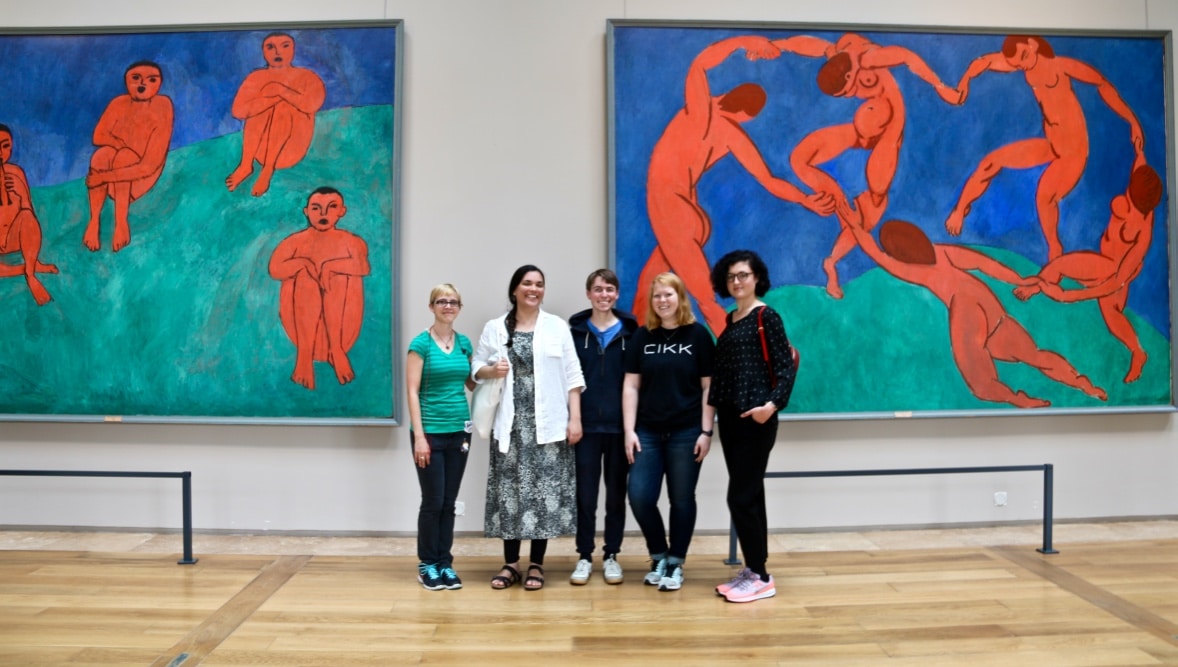
Museums as Self-Care
In 2018, doctors in Montreal began prescribing visits to the Montreal Museum of Fine Arts (MMFA) for patients experiencing depression, anxiety, and other health issues. This innovative approach to mental health treatment was launched under the initiative of the MMFA in collaboration with Médecins francophones du Canada (MFdC). The program allows physicians to provide patients […]
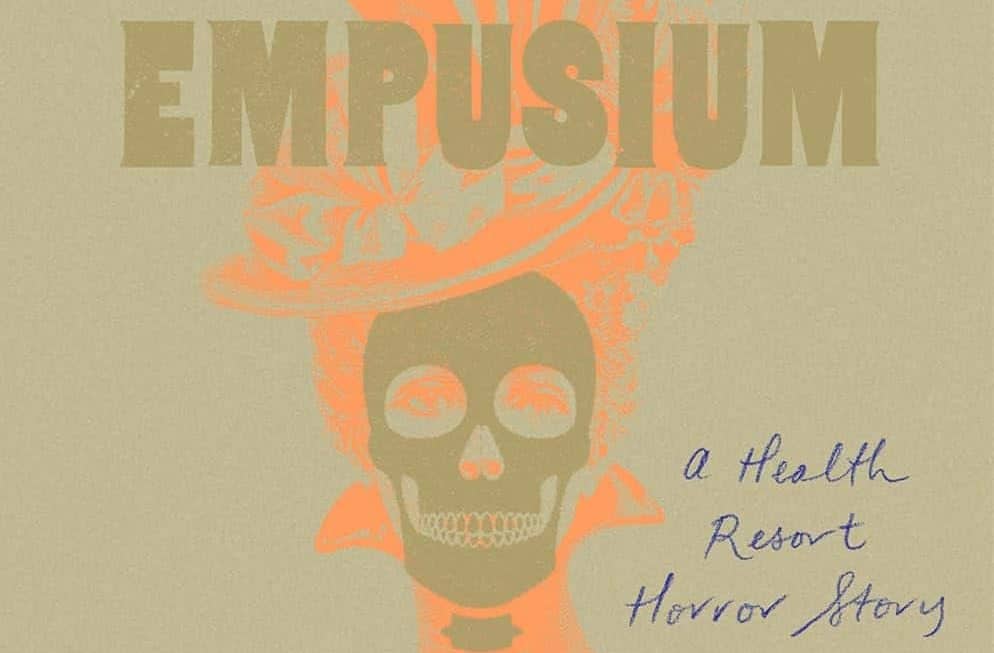
Book Review of The Empusium: A Health Resort Horror Story
The Empusium: A Health Resort Horror Story by Olga Tokarczuk, translated from Polish by Antonia Lloyd-Jones is an expertly woven folk horror story that grapples with the explosion of philosophies that overtook Europe at the turn of the last century as well as questions of gender and the ways in which we interpret the world […]
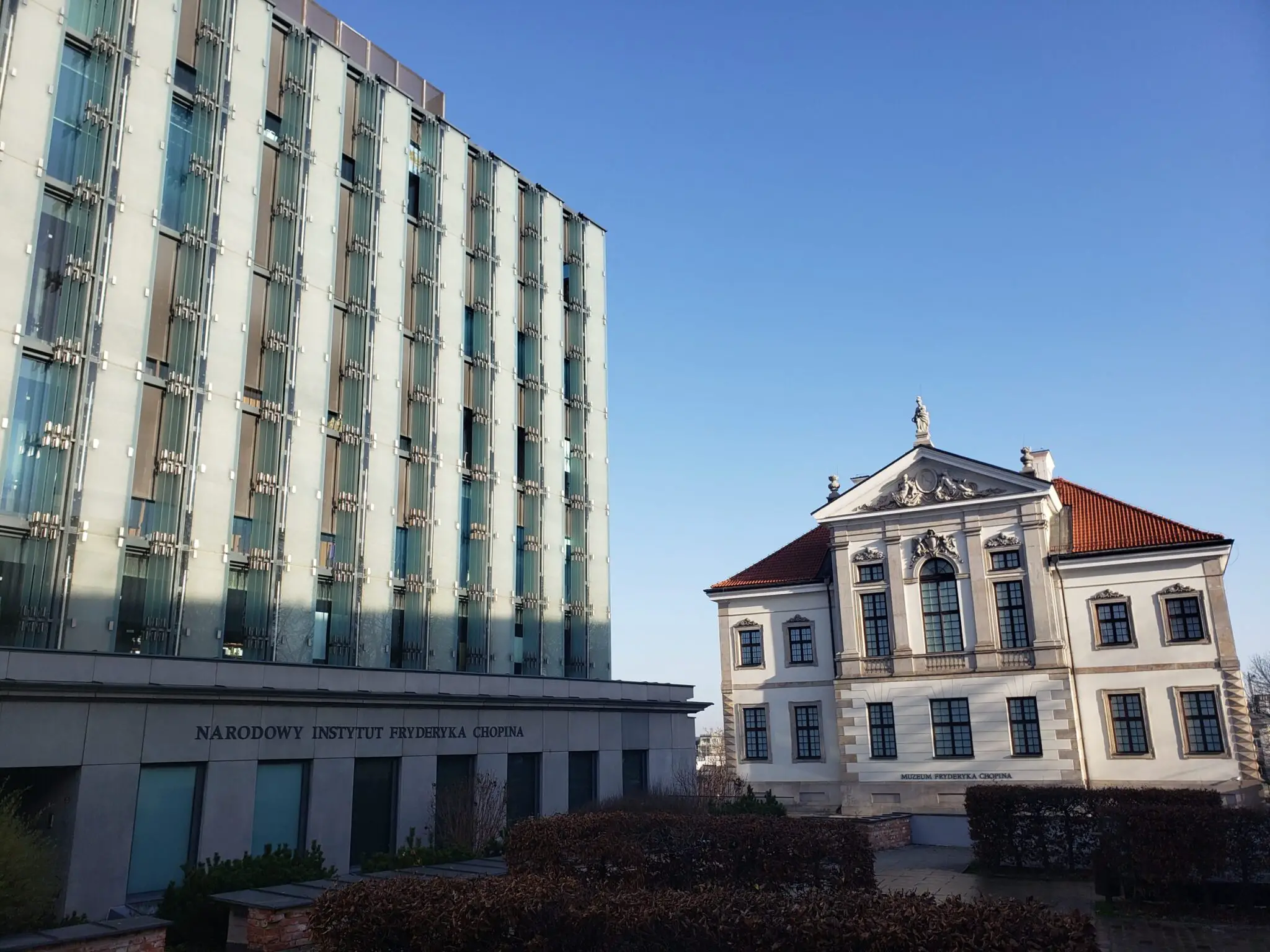
Chopin Museum and Rememberance, Warsaw
In Warsaw, large, elegant, and beautiful willow trees grace many of the parks within the city. These are the same willow trees that inspired many of the outstanding musical pieces of prodigy composer and native Pole, Frédéric Chopin. Signs of Chopin’s legacy, like the willows that inspired him, can also be seen across the city. […]
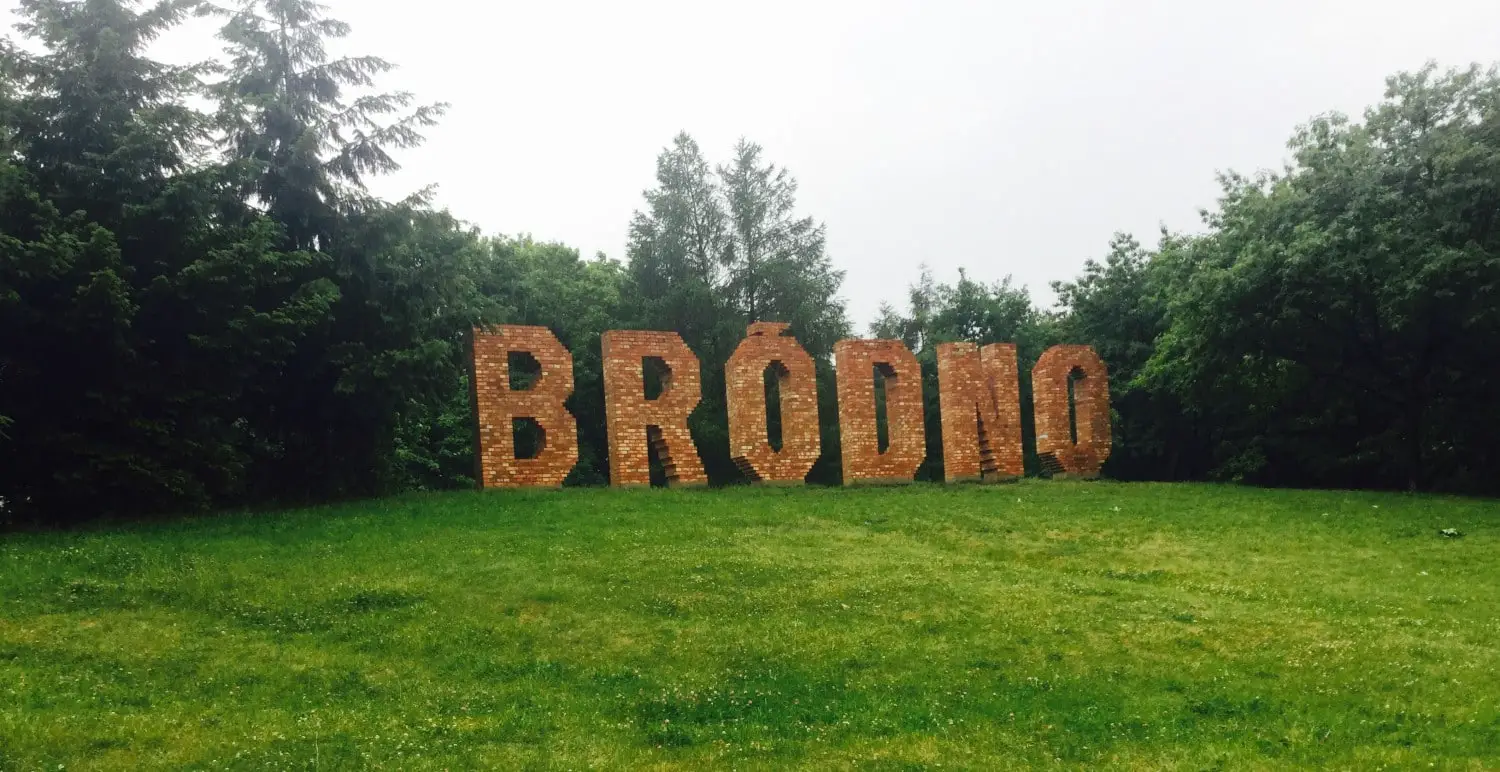
History and Art in Warsaw’s Bródno District
Most foreigners in Warsaw tend to the stick to the center of the city and Old Town, with some maybe venturing as far as the Praga district. Being that these areas are mostly discovered and easy to tour — along with being packed with tourists and locals — I decided to start taking trams to […]

The POLIN Museum of the History of Polish Jews
The POLIN Museum of the History of Polish Jews, located in Warsaw, Poland, is a renowned cultural institution dedicated to preserving and presenting the 1,000-year history of Jewish presence in Poland and to promote tolerance, understanding, and mutual respect. It serves as a space for learning, reflection, and dialogue, exploring the rich cultural and religious […]


